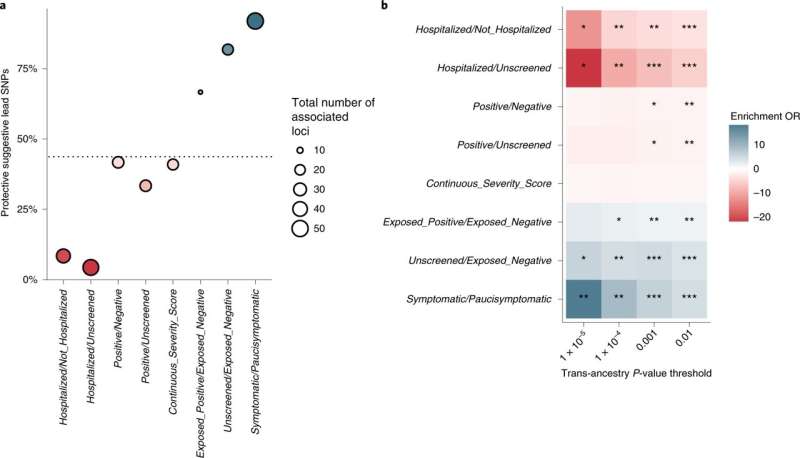Are you physically less likely to become infected with COVID-19?

Three newly-defined phenotypes (observable characteristics or traits for an individual) that capture genetic associations which may provide protection against SARS-CoV-2, are presented in a study published in Nature Genetics. The findings—revealed through the analysis of self-reported outcomes of COVID-19 from more than 700,000 customers in the United States of a DNA testing company—suggest that this method of data collection can complement clinical studies of COVID-19, notably for milder cases of the disease.
Genetic association studies can help to identify the genes and biological pathways underlying a given physical outcome or trait. Large-scale genetic studies of susceptibility to COVID-19 have focused on severe disease that is associated with hospitalization. However, most infections with SARS-CoV-2 do not lead to severe disease, and although many clinical risk factors—such as age, body-mass index or sex—are known, these do not fully explain the variation in outcomes.
Kristin Rand and colleagues analyzed self-reported outcomes of COVID-19 in questionnaires collected from 736,723 customers in the United States of a DNA testing company (median age of 57 years; 67% female). Using these genetic and survey data, the authors analyzed four previously studied phenotypes related to the risk of developing severe disease. The team also defined three new, protective phenotypes related to the risk of infection following household exposure to SARS-CoV-2 and to symptom severity. These newly-identified phenotypes are associated with regions of the genetic code that reduce the risk of COVID-19 and therefore may be useful targets for therapeutic intervention.
This research demonstrates that large-scale, survey-based analysis of direct-to-consumer testing can complement traditional studies in hospitalized populations—an approach that the authors suggest could be applied to other diseases going forward.
More information: Genevieve H. L. Roberts et al, Expanded COVID-19 phenotype definitions reveal distinct patterns of genetic association and protective effects, Nature Genetics (2022). DOI: 10.1038/s41588-022-01042-x



















